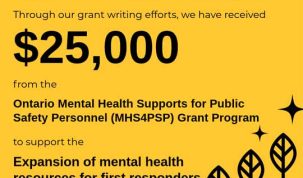With more cannabis products now legal in Canada, the local Health Unit encourages people to be safe and well-informed if deciding to use these products.
As of October 17, 2019, cannabis edibles, extracts and topicals are legal in Canada. However, people won’t be able to buy these new cannabis products in licensed cannabis stores until at least mid-December. That’s because, over the next 60-90 days, the federal government must first review and approve these products for public use.
“While the new cannabis products will face strict regulations given their potential health and safety risks, it’s also important for local residents to be aware of what is now available and how these substances may affect them,” says Catherine MacDonald, the Substances and Harm Reduction Coordinator with the Haliburton, Kawartha, Pine Ridge District Health Unit. “Just like using tobacco and alcohol, we urge people to be responsible if they choose to use any type of cannabis product. It’s all about moderation… start low and go slow.”
While smoking cannabis has been allowed in Canada since 2018, the additional cannabis products that became legal this fall include: • Edibles are products containing cannabis that people can eat or drink, including beverages, candy, and baked goods. By law, these cannabis edibles can only contain a maximum of 10 milligrams of THC (tetrahydrocannabinol) per package. THC is one of the main compounds found in cannabis that can affect people’s brain function and ability to think, as well as alter their mood and behaviour. It’s strongly recommended that individuals new to edibles or cannabis should look at the THC content of the product and start with edible cannabis products containing no more than 2.5 mg of THC. “Taking less will let you see how you feel before eating the entire 10 mg product,” MacDonald advises. • Extracts include oils and pills that a person takes by mouth, as well as oils used with a vaporizer to inhale. Cannabis extracts taken by mouth act much like edible products. Because their effects aren’t felt immediately, it’s important to be patient and wait until you are comfortable with the effects before consuming more. Oils used for inhalation within a vaporizer will allow users to feel their effects more rapidly and should also be used carefully, MacDonald says. • Topicals are cannabis products like ointments, oils, and creams that can be rubbed on the skin. Do not apply topical cannabis to damaged or open skin areas and be sure to wash hands after use to avoid getting any of the product in your eyes. Always follow the label for proper intended use.
MacDonald’s basic advice – to ‘start low and go slow’ – applies to anyone using a cannabis product. Unlike smoking cannabis, eating a cannabis product takes longer to affect a person (since the body takes longer to absorb the THC from edible cannabis). Often, the full effects of cannabis edibles aren’t felt until 30 minutes to four hours after consuming them. “The intoxicating effects or ‘high’ of eating cannabis products will also last longer, anywhere from six to eight hours,” she adds. “This makes it essential to only use cannabis products in safe environments, free of responsibilities like caring for children, being in the workplace, or having to drive somewhere.”
People should also be extra careful to: not confuse edible cannabis products with regular food items; store all cannabis products in their original childproof package; keep all cannabis products securely and safely stored out of the reach of children and pets; avoid using any form of cannabis with other drugs or alcohol as it can have deadly consequences; and never use cannabis if pregnant or breastfeeding. To learn more about the safe use of cannabis, visit the federal government (www.canada.ca/cannabis) or Ontario government (www.ontario.ca/cannabis) websites.























